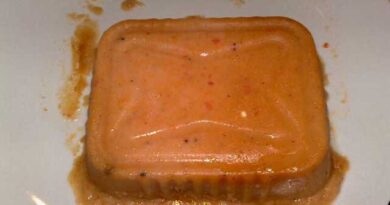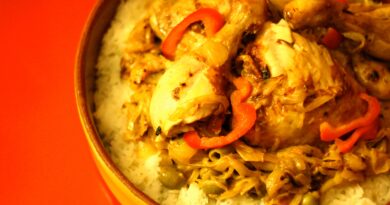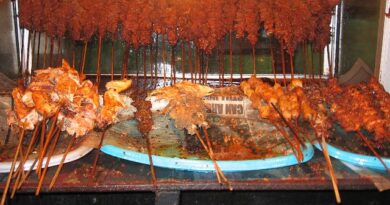Waterblommetjiebredie
Exploring the Delightful World of Waterblommetjiebredie: A South African Culinary Gem
Introduction
South African cuisine is a vibrant tapestry of flavors and influences, with each dish telling a unique story of the nation’s rich history and diverse culture. Among the many culinary delights that grace South African tables, Waterblommetjiebredie stands out as a true gem. This traditional dish, rooted in the Western Cape’s heritage, is a flavorful stew that celebrates the indigenous waterblommetjie flower. In this article, we’ll take a deep dive into the world of Waterblommetjiebredie, exploring its origins, ingredients, preparation, and the cultural significance that makes it a beloved part of South African gastronomy.
The Origins of Waterblommetjiebredie
Waterblommetjiebredie has its roots in the Western Cape, where the waterblommetjie plant (Aponogeton distachyos) thrives in the region’s water bodies. The name “waterblommetjie” translates to “little water flower” in Afrikaans, capturing the essence of the delicate blossoms that adorn this aquatic plant. The dish itself has a history deeply intertwined with the Cape Malay community, known for its unique fusion of African, Asian, and European culinary traditions.
Ingredients That Define the Dish
At the heart of Waterblommetjiebredie is the waterblommetjie itself, which imparts a distinctive flavor and texture to the stew. These tiny, white flowers have a subtle sweetness and crispness, contributing to the overall complexity of the dish. In addition to waterblommetjies, the key ingredients include lamb, potatoes, onions, and a medley of spices that reflect the Cape Malay influence.
Lamb is the protein of choice for Waterblommetjiebredie, providing a rich and savory base. The stew typically includes lamb shanks or stewing lamb, allowing the meat to become tender and infused with the flavors of the broth. Potatoes add a comforting element, while onions contribute sweetness and depth.
The Spice Blend
Cape Malay cuisine is renowned for its skillful use of spices, and Waterblommetjiebredie is no exception. The stew is seasoned with a blend of aromatic spices, such as cinnamon, coriander, cumin, and cardamom. These spices not only enhance the flavor of the lamb but also create a fragrant and warming experience that is characteristic of Cape Malay dishes.
Preparing Waterblommetjiebredie
The preparation of Waterblommetjiebredie is a labor of love that involves slow-cooking the ingredients to allow the flavors to meld and the meat to become tender. The process typically begins with browning the lamb in a pot, followed by the addition of onions and spices. Once the lamb is coated in the aromatic mixture, water and potatoes are added to create a hearty broth. Finally, the star of the show, the waterblommetjies, is introduced to the pot, allowing them to simmer until they reach the perfect state of tenderness.
Cultural Significance
Waterblommetjiebredie is more than just a dish; it is a celebration of South Africa’s cultural diversity and culinary heritage. The Cape Malay community, with its roots in the Cape of Good Hope, has left an indelible mark on the nation’s food landscape. This dish, with its blend of indigenous ingredients and traditional cooking techniques, pays homage to the resilience and creativity of the people who have shaped South Africa’s history.
Beyond its cultural significance, Waterblommetjiebredie is often enjoyed as a communal meal, bringing families and friends together around the table. The act of sharing this flavorful stew becomes a shared experience, fostering a sense of connection and unity.
Modern Interpretations and Variations
As with many traditional dishes, Waterblommetjiebredie has evolved, with chefs and home cooks adding their twists to the classic recipe. Some variations include the addition of apricots for a touch of sweetness, while others experiment with different cuts of meat or cooking methods. These modern interpretations showcase the adaptability of South African cuisine, ensuring that it remains dynamic and relevant in contemporary culinary conversations.
Conclusion
Waterblommetjiebredie stands as a testament to the rich tapestry of South African cuisine, weaving together indigenous ingredients, cultural influences, and a deep appreciation for flavorful combinations. This dish is more than a meal; it is a connection to history, a celebration of diversity, and a reminder of the culinary treasures waiting to be discovered in every corner of the world. As you savor the delicate flavors of waterblommetjies mingling with aromatic spices and tender lamb, you embark on a journey through the Western Cape’s landscapes and the vibrant traditions that have shaped this remarkable culinary gem.



